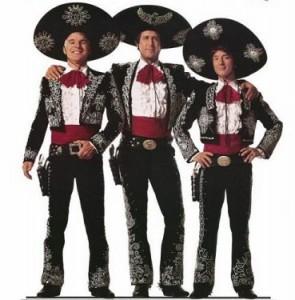 Welcome to the 59th edition of The Three Things, the weekly update of three links, podcasts, videos, or books you can’t miss – from Howie Goldfarb (Blue Star Strategic Marketing), Joe Cardillo (Visual.ly), and yours truly.
Welcome to the 59th edition of The Three Things, the weekly update of three links, podcasts, videos, or books you can’t miss – from Howie Goldfarb (Blue Star Strategic Marketing), Joe Cardillo (Visual.ly), and yours truly.
For those of you new to this series, The Three Things arrives in your inbox on Sunday mornings (unless you don’t subscribe, but that can easily be fixed if you hurry over and enter your email address or add to your RSS feed) so you have some extra time to spend perusing the obscure content we’ve curated for you (and one another) before your week begins and deadlines, meetings, and work takes over.
Today we explore advertising, open access and innovation, and the mysteries of our brains, including a revolutionary new look at autism.
Fifty-Seven Minutes Very Well Spent: A Masterclass in Advertising from Dave Trott
Howie on Where Real Advertising Happens. I am not a fan of what George Parker calls the BDA’s. Big Dumb Agencies. If you look at the Big Five conglomerates, they are responsible for 99% of the bad advertising on TV. And ironically 95% of advertising on TV is bad. In fact I have been trying to get Pepsi to fire TWBA/ChiatDay Los Angeles for three years now. Who cares if they created the famous 1984 Apple spot. They have destroyed the Pepsi brand and yet they keep the business.
My friend Vinny (no pun intended) came from that background, first working for the big agencies (before consolidation). But he is unique. He sought out the best to work for and with before starting his own agency. Vinny Warren has two commercials in the Super Bowl Commercial Hall of Fame. Remember WAZZZZZUP? For Budweiser? His blog is filled with creativity and reality. He was the FIRST to do a national campaign to use Twitter (Wheat Thins anyone?) In fact I am pretty sure Weiden + Kennedy took their Man on a Horse Twitter campaign from Vinny’s earlier work.
Vinny will never tell you advertising is the most important thing in the world. BUT he feels that advertising should be done well. There is a craft to it. But so few practice that craft. I shared this link because Vinny feels Dave Trott in the UK ranks in the Pantheon of Advertising Geniuses (Or PAG’s as we call them). And this is a great video and worth watching. Even if you are in PR or marketing or media…it’s worth the watch. As for Vinny….have you seen the Toys R Us Christmas commercial with the kids on the bus this year? Then you know Vinny already
Munich Declares Switch to Open Source Successfully Completed
Joe on Open Access. Munich, Germany is now running completely on Linux. I’m fascinated by all things open access, and this is a significant story for a bunch of reasons. One is that it’s an example of allowing and even encouraging innovation, so instead of saying “we can’t do that” and “even if we can we can’t really share w/others because of proprietary X, Y, Z,” here’s an example of the opposite of both of those things.
Basically, Munich is empowering workers. This handing over of who drives innovation to users, it’s an extremely useful concept and part of a much larger change that digital is forcing.
The Boy Whose Brain Could Unlock Autism
Lindsay on Intense World Theory. The human brain freaks me out. Without our brains, what are we? Just meat puppets – literally. There are around 85 billion neurons in our heads, but we can only listen to maybe 1,000 at a time. We have no clue what the brain can do – we barely even know how it does what it does, actively, day to day, that keeps us upright and sentient. Scientists are beginning to work on a massive brain mapping initiative, similar to the Human Genome project, in the hopes of figuring some of the brain’s capabilities out. We may even crack the very frustrating codes behind conditions such as Alzheimer’s, schizophrenia and Parkinson’s disease.
This piece, from Medium.com, is a fascinating look at our tangled brain, and the little understood condition known as autism. What if the super sensitivity and urge to withdraw, traits common in autistic children, were not a direct result of the condition, but in fact were caused by the chaos, confusion and noise that autism-susceptible children are exposed to from the minute they are born? Our ‘intense world’. What if we reduced those stressors in infancy…? Would that change the face of autism?
The science is there, but so is a beautifully written story reminding us that behind the science – even at the highest level – are real human beings. As a bonus, the piece itself is stunningly produced. I hope you enjoy it.
Now it’s your turn. Is there a book, podcast, article, TV show, blog post, or story we should read?